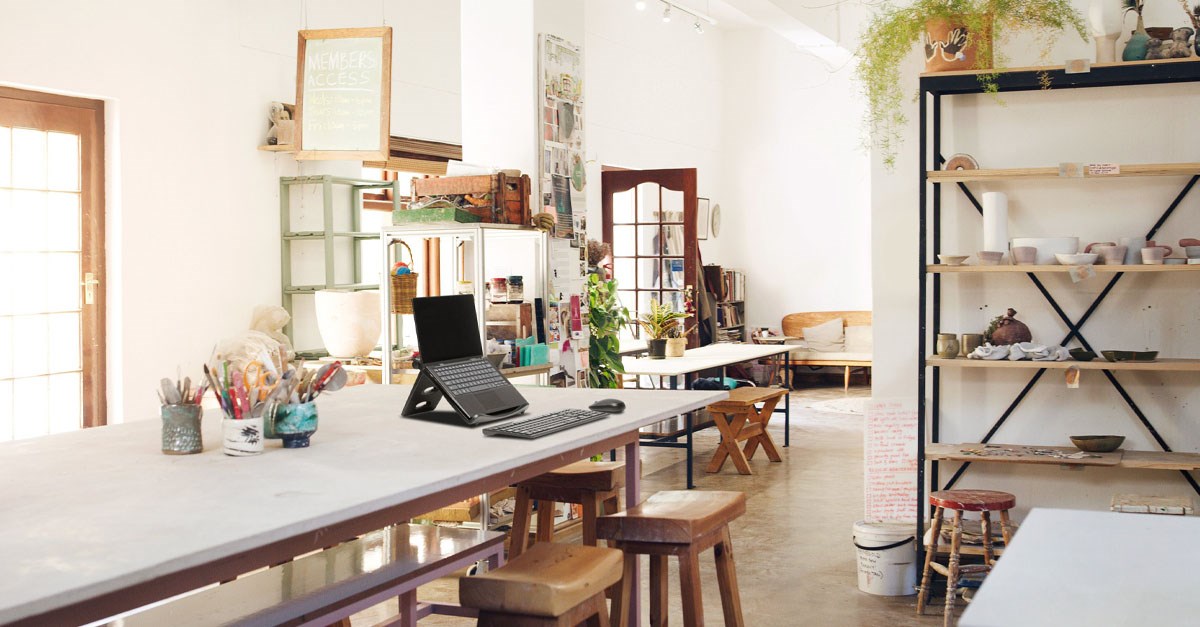industry news Monday 08 Feb 2021 @ 09:30 Return to Work: How the Office Environment Will Change

The pandemic forced almost every organization around the world to review their work practices and revisit policies. New routines and reassessing what is possible quickly moved to the top of the agenda and in many ways, we’re still learning how future work arrangements will look. For many employees and employers, return to work planning still carries a host of uncertainties. Work from anywhere also arose as a new option, giving companies and staff plenty to think about when considering the future of office work.
Recent discussions at a roundtable with experts in the ergonomic industry made Kensington realize that every office will be different in the future. As companies adopted new work routines and sent most of their staff home, it quickly became clear that office real estate was a major expense that did not really justify the cost. One of the key differences (according to the experts) is moving to more hybrid office arrangements. Hoteling and shared office spaces can help lower costs, ensure the workforce remains productive, and accommodate any sudden changes or shifts in working arrangements.
5 Best Practices for Return to Work Planning
A report by McKinsey highlights the need for companies to revisit work arrangements for staff returning to the office. Attitudes have changed, your workers feel empowered, and the way we view the office will never be the same again. While organizations could move to remote work in an emergency, the efficiency and productivity required demands that employees go above and beyond normal expectations.
The crisis model cannot dictate the future of work in your organization. To assist, we have gathered the top five best practices for returning employees to work and enabling them to respond to any disruption effectively. Any savings on leasing office space can assist in building a resilient, mobile workforce by reinvesting the money to empower your employees.
Here are the best ways to return your employees to the office and deal with any future challenges quickly.
1. Invest in Ergonomic Work-from-Anywhere Kits
Because the situation can change at any moment, dedicated workstations quickly became outdated. While having all staff working under the same roof was an approach many managers championed in the past, they couldn’t exactly substantiate it with facts. Some supervisors may still hold this view even in the face of insurmountable evidence to the contrary.
Work from home, or a coffee shop, or a quiet bed & breakfast along the coast has been proven time and time again to provide productivity benefits and (as we now know), makes a company more resilient. Ergonomic work kits that travel with employees to any destination is the next logical step in the evolution of work. Equipping employees with a laptop, a laptop riser, and an ergonomic keyboard and mouse will allow them to remain productive regardless of where they need to operate. If the situation at the office changes, employees can quickly pack up their entire workstation and move to another location.
2. Set New Cleaning Protocols for All Office Employees
Employees will need to know what the sanitization regimes in the office will be before feeling safe to return. As companies may opt to reduce their office footprint and rely more on hoteling and hot-desking, ensure your policies clarify who will be responsible for cleaning shared office spaces before asking employees to return to work.
Encourage employees to take responsibility for their own sanitization by providing them with a solution like the UVStand from Kensington. Doubling as a monitor stand, the UVStand is an effective and convenient way to clean all devices, even a full-size keyboard including your phone, standard keyboard, and mouse. With the UVStand Monitor Stand, employees can sanitize many of their accessories and office equipment with a solution that’s always part of their desk setup.
3. Provide Employees with Mobility Solutions
While employees who travel regularly will know the value of a good carrier bag or case, many are just now realizing the effort it takes to move an entire workstation between two locations. Giving staff the necessary work-from-anywhere tools and solutions that come with modern ergonomics should also include a rugged case or backpack.
For employees who use more than one screen (which you will not be able to transport), double up on the equipment for their primary locations. The same applies to docking stations and other accessories that improve productivity but do not necessarily travel easily.
4. Rethink the Office Layout
One of the main concerns in the office will be the ability to maintain social distancing. If the company is downsizing on space or moving to a new location, then ensure the new layout addresses these constraints. Companies can also look to turn other spaces into workstations by providing network access and power sockets for situations where overflow may require turning a patio or common area into a mobile desk.
5. Remind Employees to Take Breaks and Move Around Often
Working from home allowed employees to take microbreaks at any time and refocus their minds when required. When they return to work in an office, encourage your employees to maintain these practices. The added stress and anxiety of working in an office could affect productivity and concentration.
By reminding employees that their safety and well-being is still a primary concern for the company, your staff will be able to operate effectively from the office, their home, or any other location. You can also share this handy stretch guide from Kensington to help your staff to de-stress at the office when required.
Preparing Employees to Return to Work with Kensington
With the future still uncertain, employers need to address all their employees’ concerns before expecting them to return to the office. Enabling workers with mobile workstations, emphasizing the new safety measures in shared offices, and reminding staff that their wellness is your primary concern with advanced ergonomics is the best strategy for returning them to work.
Kensington has a range of office solutions that cover any type of work environment and can help your staff achieve more regardless of the existential challenges they face. Keeping staff safe, productive, and making your business more resilient starts with a comprehensive return-to-work plan. Kensington can assist with configuring the ideal workstation for any employee and work environment using our ergonomic products and desk accessories.



